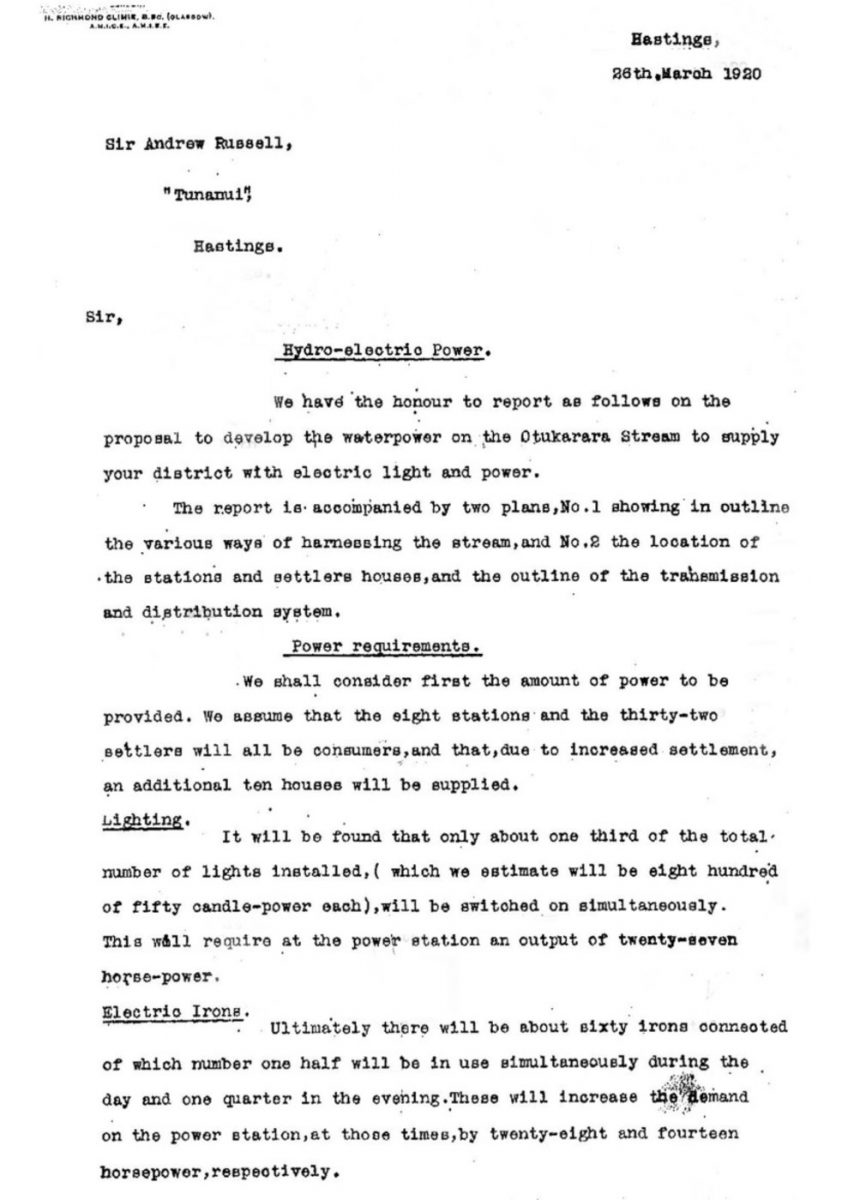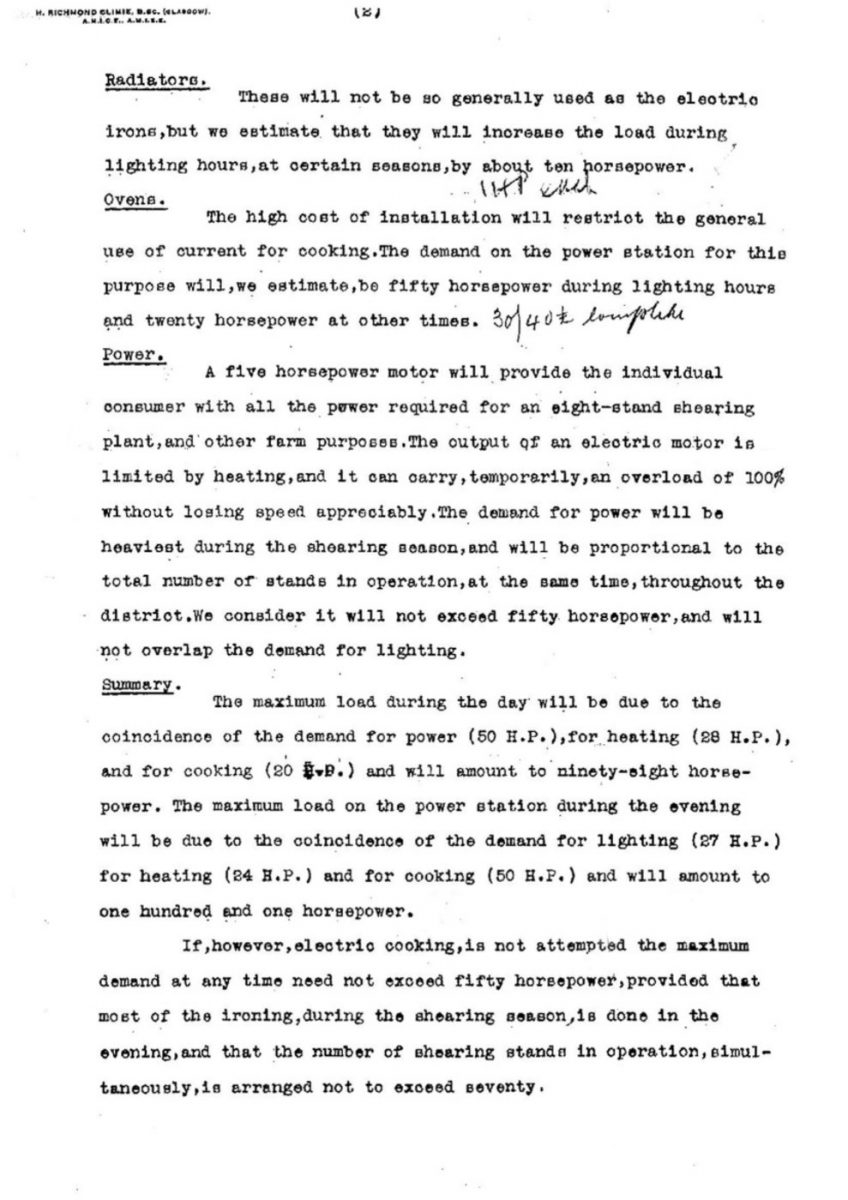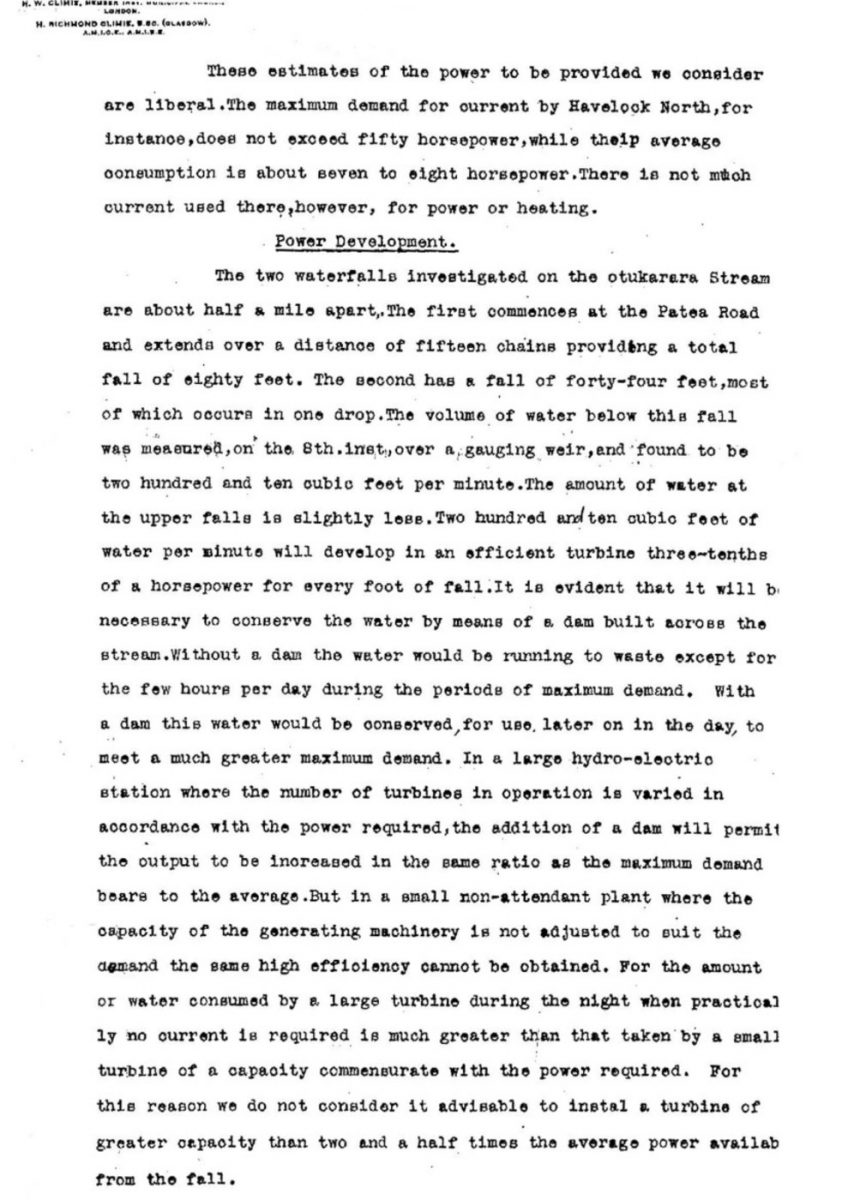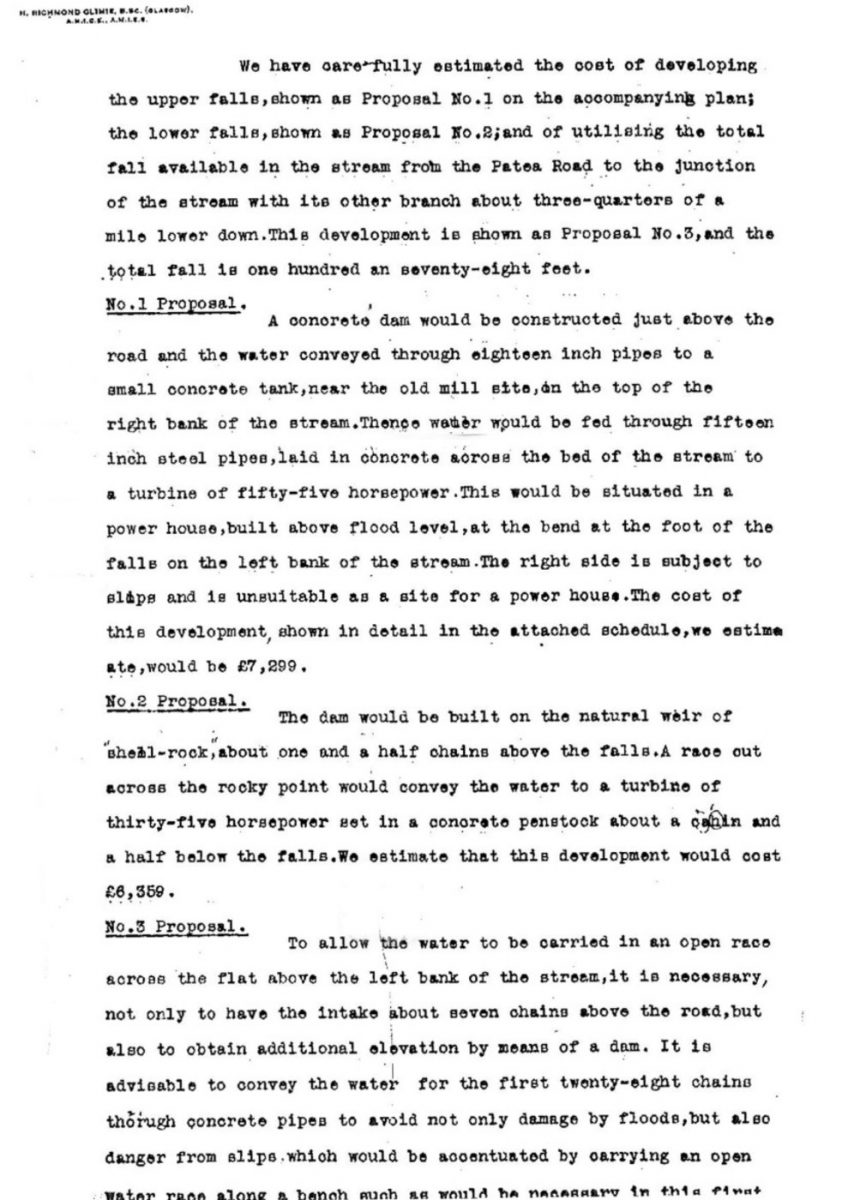H. RICHMOND CLIMIE, B.SC. (GLASGOW)
A.M.I.C.E. A.M.I.E.E.
The route of the transmission line should follow generally the main coach road as shown on plan No. 2.
The cost of the transmission and distribution system, together with service connections and meters, we estimate, would be £12, 158. The annual expenditure for transmission and distribution would be £1086 as shown in detail in the attached schedule.
The total annual expenditure, including capital charges, maintenance and attendance would amount to £1,956.
Revenue.
Assuming that the current is generally and freely used for all purposes we estimate that a revenue equal to the expenditure can be obtained without adopting high charges.
Lighting.
The settlers houses could be supplied at £10 per year, and stations at £25. This would be equivalent to about 9d. per unit. To run four lights with a benzine generating set would cost £16 per annum for fuel alone. [Handwritten – plus installation about 2/5/- per light]
Heating.
Irons could be supplied at £3 per annum, and radiators at £5 per annum.
Cooking.
The charges would be equivalent to the cost of cooking with gas. [Handwritten – 12£ a year for for a small range 30£ for large]
Power.
Energy could be sold at £9 per H.P. per year, provided its use is generally adopted. In country districts supplied from Lake Coleridge the charge is £7 per H.P. per year for small motors.
Our estimate as shown by the attached schedule, for revenue is £2,000.
In an undertaking of this kind it is the amount of possible demand by any consumer on the generating plant that should be made the basis of the price charged. What is sold is not units of energy, but units of plant capacity, which have to be reserved for each particular consumer. We would therefore advise the adoption of



















Do you know something about this record?
Please note we cannot verify the accuracy of any information posted by the community.